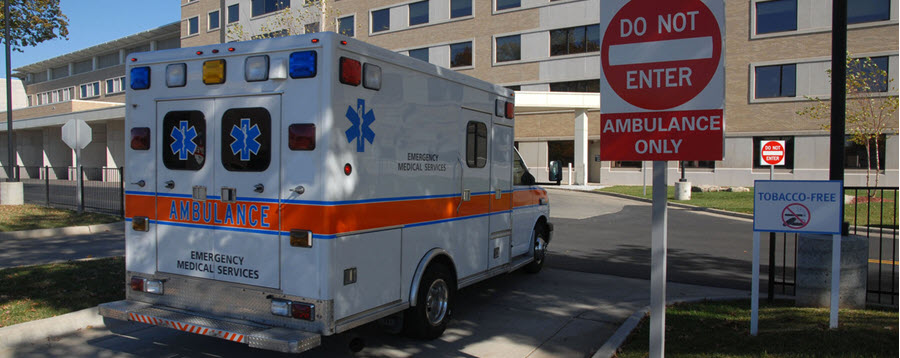
Avoiding the 3 Most Costly Workplace Injuries

All too often, accidents and injuries in the workplace are a result of improper or insufficient safety protocols. OSHA, our nations’ workplace safety guard dog, works to minimize these incidents by inspecting, and when necessary, issuing citations for safety violations. While OSHA citations are costly, $13,653 per violation, accidents leading to injury or even employee deaths are significantly worse.
Did you know that every year OSHA puts out a list of the Top Ten Safety Violations? That means that you already know what an OSHA citation could cost you. OSHA is tipping its hand because the goal isn’t to issue citations, the goal is to create safe workplaces throughout the country. The OSHA Top Ten Safety Violations is a must-see as you put together your own safety program.
What may surprise you is that the Top Ten list, and the most costly workplace injuries, can really be broken down into three major categories.
Three Costly Workplace Injuries
1. Slips, Trips, and Falls
Think of an employee slipping on a slick floor and throwing out her back or a construction worker falling off a high-rise job site. Accidents like those and everything in between falls into this category. The most common citations are for these four violations.
- Proper Fall Protection for Construction Workers – OSHA’s rule is that any worker elevated six feet or more above the next level should have some form of fall protection. A harness or a railing can do the trick.
- Proper Training in Use of Fall Protection Equipment and Procedures – The best tools are only as good as the user’s knowledge of how to use them. The right training can save lives.
- Safe Use of Ladder – Broken ladders, old ladders, and ladders used improperly are a major issue both in the workplace and at home. Broken ladders should be repaired or replaced. Metal ladders should not be used near electricity. All ladders should be placed on the floor or ground, not on top of boxes or pallets.
- Safe Use of Scaffolding – Scaffolding allows workers to do their jobs at significant heights, as needed. But, a poorly constructed scaffolding or one in bad repair is an accident waiting to happen.
You can help prevent these common costly accidents by posting safety signs that remind workers about slip, trip and fall hazards, including fall protection signs for manufacturing and construction sites, as well as ladder safety signs and scaffolding safety notices.
2. Machine Injuries
Machines are a major part of most businesses. They help us do things faster and better. But, machines come with a certain degree of risk. From the electricity used to power them to the moving parts, machines create safety issues. These are the three most common violations that OSHA sees and issues citations for when it comes to machinery:
- Industrial Trucks and Forklifts – Trucks and forklifts are an essential part of most businesses. They help us move products and supplies, but they are a major cause of on-the-job injuries. It is essential to install safety measures for loading docks, storerooms, and anywhere else moving vehicles are used.
- Safety Guards On Machines – Think of all of the machines’ dangerous moving parts in a standard workplace, whether it’s a production plant or a grocery store’s back room. Any part of a machine that has the potential to be dangerous should have a safety guard in place.
- Preventing Machine Activation During Maintenance – Perhaps the greatest danger involving machines happens when a machine is turned on while someone is working on it. OSHA has guidelines for lockout/tagout procedures to eliminate such incidents. Even the most routine maintenance can lead to disaster if precautions are not taken.
Machine safety signs and labels are key to keeping workers safe around moving parts.
3. Personal Protection (PPE)
Having the proper PPE is essential for workplace safety. Employers need to provide the proper PPE for their employees, make sure they understand how to use it correctly – and post and enforce PPE rules. These three violations are frequently on OSHA’s list:
- Providing Eye and Face Protection – Areas, where hazardous gasses, chemicals or flying objects are possible, should require eye and face protection. It is up to the employer to provide, and enforce the use of, PPE in designated areas.
- Providing Respiratory Protection – Employees working jobs that require working around large amounts of dust, hazardous gasses or areas of low oxygen should have ready access to respiratory protection. This could be in the form of face masks or oxygen tanks.
- Proper Chemical Labeling – Many of the chemicals that are commonly used can be very hazardous. Provide your employees with the information they need to handle them safely by keeping the proper labeling on all chemicals as well as keeping safety information sheets readily accessible.
Workplace safety should be a top priority for any business. The OSHA annual Top 10 Safety Violations list is a great place to start looking for potential problems.
When doing a safety survey, it’s important to know what types of safety violations are the most likely to put your employees in danger and put you at risk for an expensive OSHA citation. Once you know what to look for, you can document and find solutions for these issues and help avoid these most costly workplace injuries.

